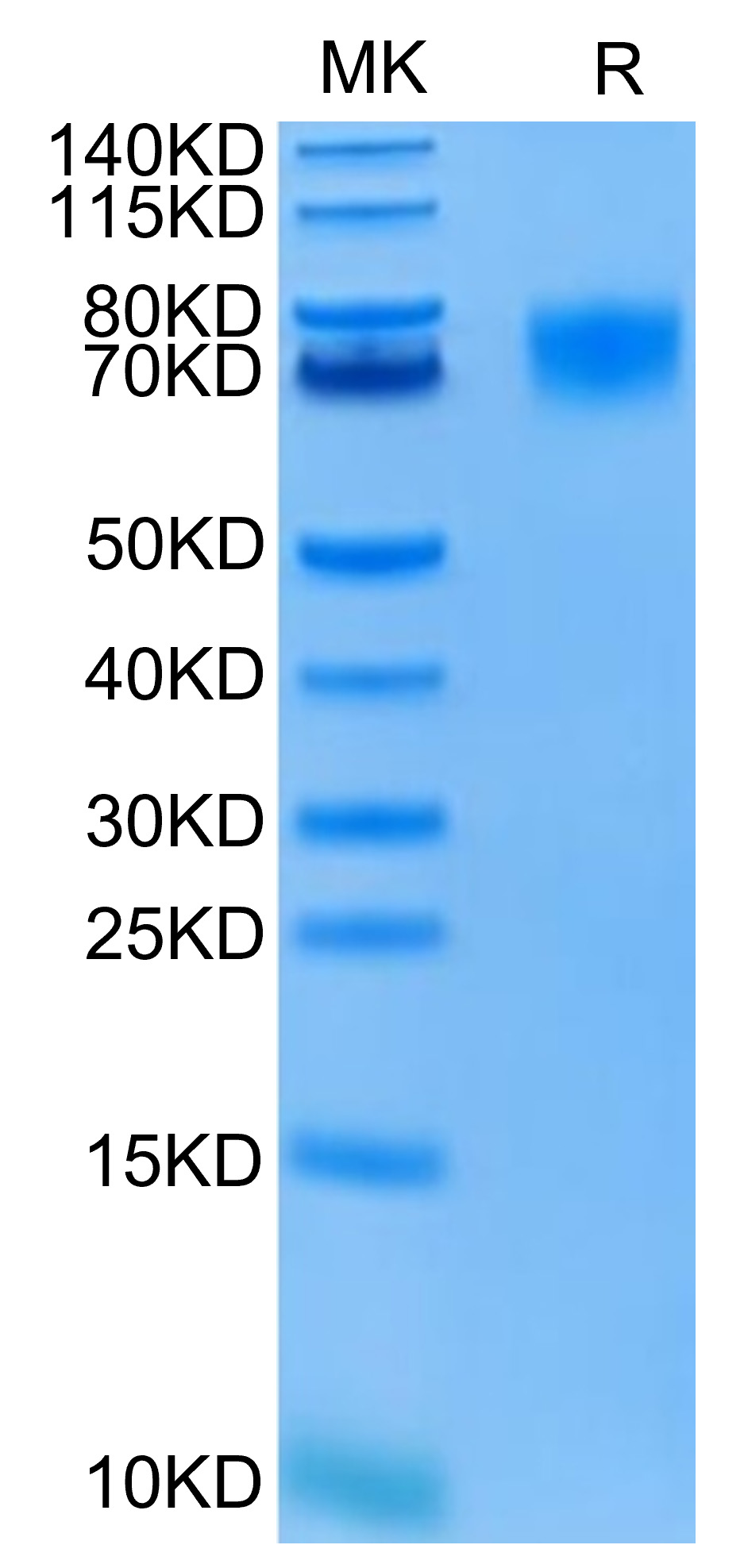Description
FITC-Labeled Recombinant Human ERBB1/HER1/EGFR (25-378) Protein
The FITC-Labeled Recombinant Human ERBB1/HER1/EGFR (25-378) Protein is a biologically active recombinant protein that plays a significant role in various cellular processes and signaling pathways in human biology. This protein is widely employed in immunological research, cell biology studies, protein-protein interaction analyses, and therapeutic development, providing researchers with a reliable tool for investigating FITC-Labeled ERBB1/HER1/EGFR (25-378) function and its implications in health and disease.
This product (SKU: RPCB0578) is produced using advanced expression systems and features a C-His&Avi tag for convenient detection and purification. The protein exhibits a calculated molecular weight of 41.6 kDa with an observed molecular weight of 68-80 kDa under denaturing conditions, achieving ≥ 95 % as determined by SDS-PAGE., ensuring exceptional quality and consistency for research applications.
Key Features
| High Purity by Affinity Chromatography | |
| Mammalian & Bacterial Expression Systems | |
| High lot-to-lot consistency via strict QC |
| Product Name: | FITC-Labeled Recombinant Human ERBB1/HER1/EGFR (25-378) Protein |
| SKU: | RPCB0578 |
| Size: | 100 μg |
| Reactivity: | Human |
| Synonyms: | ErbB, EC 2.7.10, EC 2.7.10.1, EGFR, mENA, LEGFR, ERBB, ERBB1, HER1, PIG61, NISBD2 |
| Tag: | C-His&Avi |
| Calculated MW: | 41.6 kDa |
| Observed MW: | 68-80 kDa |
| Gene ID: | 1956 |
| Protein Description: | High quality, high purity and low endotoxin recombinant FITC-Labeled Recombinant Human HER1/ERBB1/EGFR (25-378) Protein (RP00500FLQ), tested reactivity in HEK293 cells and has been validated in SDS-PAGE.100% guaranteed. |
| Endotoxin: | < 1 EU/μg of the protein by LAL method. |
| Purity: | ≥ 95 % as determined by SDS-PAGE. |
| Formulation: | Supplied as 0.22 μm filtered solution in PBS (pH 7.4). |
| Storage: | Store at -70℃. This product is stable at ≤ -70℃ for up to 1 year from the date of receipt. For optimal storage, aliquot into smaller quantities after centrifugation and store at recommended temperature. Avoid repeated freeze-thaw cycles. |
The epidermal growth factor receptor (EGFR) is overexpressed in a variety of human epithelial tumors, often as a consequence of gene amplification. Tumors with EGFR gene amplification frequently contain EGFR gene rearrangements, with the most common extracellular domain mutation being EGFRvIII. This mutation leads to a deletion of exons 2-7 of the EGFR gene and renders the mutant receptor incapable of binding any known ligand.








